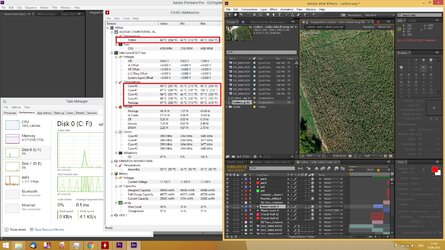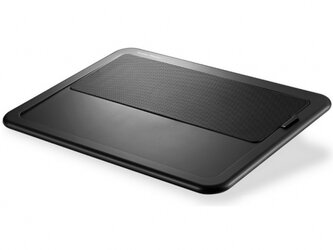- Joined
- Sep 19, 2012
Hi guys,
i know it is a laptop question, but its still cooling question
So, i have Asus N750JV which i use for video editing/rendering... Thing is CPU gets, 100C degrees hot. I know that laptops get much more hot, but thing that this is too much. Intel states max for this CPU is 100C.
Exaust air, and top ove the laptop - right above the CPU is crazy hot, so i believe sensors are good.
I have opened down lid, and cleaned fan, and the sink, so there is no dust. Also i use cooling pad.
I have attached Task manager and HWmonitor screenshot.

Any advice to get my CPUs temp down would be much appreciated. If the advice is to replace thermal paste on CPU, which paste to use?
Laptop configuration:
CPU: i7 4700HQ
RAM: 12GB
HDD: 480GB Kingston UV400 SSD / 1TB HDD
GPU: Nvidia GeForce 750M
Forget about my desktop signature
i know it is a laptop question, but its still cooling question
So, i have Asus N750JV which i use for video editing/rendering... Thing is CPU gets, 100C degrees hot. I know that laptops get much more hot, but thing that this is too much. Intel states max for this CPU is 100C.
Exaust air, and top ove the laptop - right above the CPU is crazy hot, so i believe sensors are good.
I have opened down lid, and cleaned fan, and the sink, so there is no dust. Also i use cooling pad.
I have attached Task manager and HWmonitor screenshot.

Any advice to get my CPUs temp down would be much appreciated. If the advice is to replace thermal paste on CPU, which paste to use?
Laptop configuration:
CPU: i7 4700HQ
RAM: 12GB
HDD: 480GB Kingston UV400 SSD / 1TB HDD
GPU: Nvidia GeForce 750M
Forget about my desktop signature
